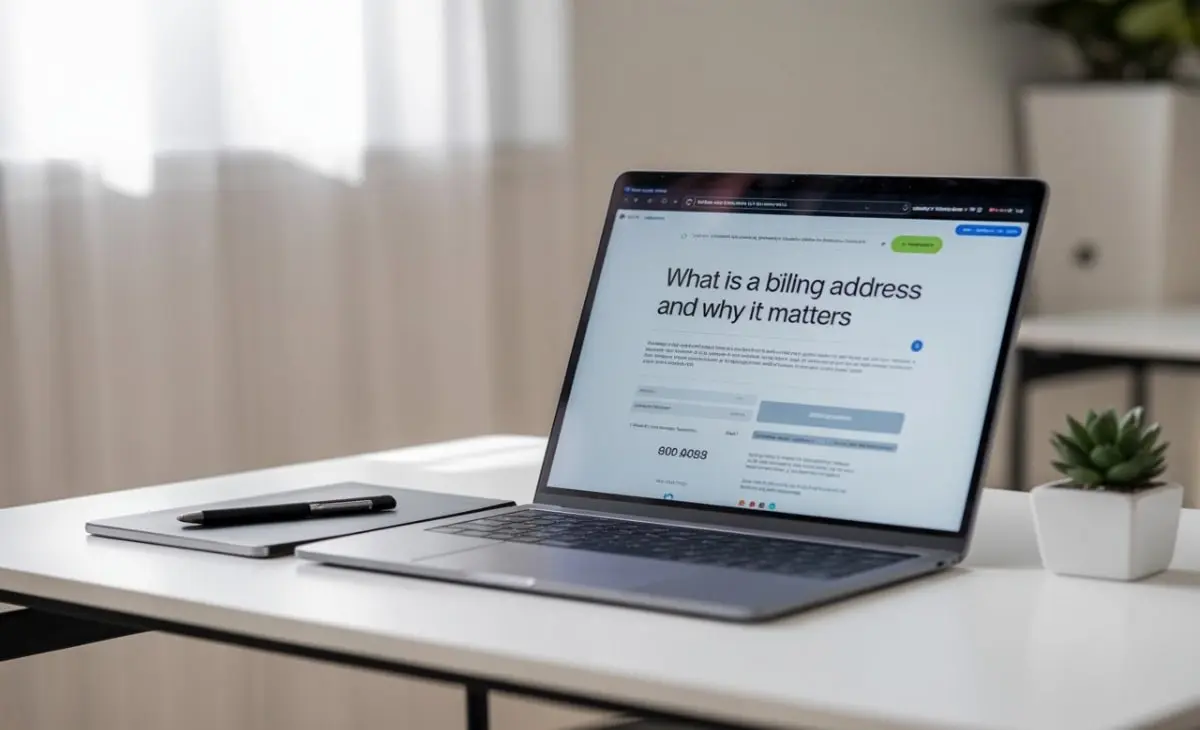Have you ever tried making an online purchase, entered your credit card details, and suddenly the transaction failed with a confusing message like “what is a billing address”? If so, you’re not alone. This is one of the most common issues shoppers face when using cards online.
Understanding what is a billing address isn’t just about filling out a form correctly — it’s about protecting your identity, avoiding failed payments, and ensuring that your financial details remain secure. In this article, I’ll break down everything you need to know about billing addresses, share insights from real-world experiences, and provide actionable tips so you never run into unnecessary payment problems again.
What is a Billing Address?
At its core, It is the address linked to your credit or debit card account. It is the location where your bank or card issuer sends financial statements, bills, and sometimes important account updates.
For example, if you opened a bank account with your home address, that becomes your billing address unless you later update it.
Think of it as the official home of your card. While a shipping address tells the seller where to send your package, the billing address tells the bank where to verify your identity.
Why Does a Billing Address Matter?
Billing addresses may seem like small details, but they serve critical purposes:
- They help banks verify that the person using the card is the actual owner.
- They reduce fraud by ensuring purchases are connected to the correct account holder.
- They ensure financial correspondence (like statements) reaches the right place.
- They act as a verification layer during online payments.
Without an accurate billing address, you may face declined payments, unnecessary delays, or even account freezes.
Billing Address vs. Shipping Address
One of the most confusing parts for new online shoppers is distinguishing between billing and shipping addresses.
- Billing Address: The registered address linked to your card or account.
- Shipping Address: The physical address where you want your product delivered.
In many cases, these can be the same. However, if you order a gift for someone else, your billing address will still be your home, while the shipping address will be the recipient’s location.
A mismatch between the two is normal, but a mismatch between your billing address and what your bank has on file can trigger declined transactions.
Real-World Example: Billing Address in Action
A close colleague once tried booking flight tickets online but kept getting rejected even though his card had sufficient funds. After multiple failed attempts, he realized he had entered his new apartment address instead of the one still linked to his bank account. Once he corrected it, the payment went through instantly.
This simple mistake highlights why knowing and updating your billing address matters.
How to Find Your Billing Address
If you’re unsure what your billing address is, here are common ways to find it:
- Check your bank statements (paper or digital).
- Log into your online banking account or mobile app.
- Call your bank’s customer support.
- Review the details linked to your credit or debit card.
Always remember, your billing address is the one your bank officially recognizes — not necessarily the one where you live today unless you’ve updated it.
How to Update a Billing Address
Life changes — people move, relocate for jobs, or shift to new homes. Forgetting to update your billing address can cause headaches, but fixing it is usually simple.
Here’s a general step-by-step process:
- Log in to your banking portal or credit card app.
- Go to the profile or account settings section.
- Look for “Update Billing Address” or similar.
- Enter your new address and confirm with required documents.
- Wait for confirmation, usually via SMS or email.
From personal experience, I recommend updating your billing address as soon as you move. Otherwise, banks may continue sending sensitive financial documents to your old home, which increases the risk of identity theft.
Common Mistakes People Make with Billing Addresses
Despite its importance, billing address errors are extremely common. Some frequent mistakes include:
- Typing the wrong ZIP code.
- Entering a shipping address instead of a billing address.
- Forgetting to update the address after moving.
- Using a work address instead of a home address (unless linked with the bank).
Even minor errors, such as abbreviating “Street” as “St.,” can sometimes cause rejections, depending on how strict the payment processor is.
Billing Address and Fraud Prevention
Banks use billing addresses as part of a system called Address Verification Service (AVS).
Here’s how it works: when you enter your card details online, the AVS checks if the address provided matches the one stored with your bank. If there’s a mismatch, the transaction may be flagged or declined.
This small but powerful step helps prevent unauthorized users from making purchases with stolen card numbers.
Is a Billing Address Always Required?
For most online transactions, yes. However, some platforms or digital wallets, like PayPal or Apple Pay, may streamline this process by verifying your address once and storing it for future use.
Still, for high-value purchases, international orders, or subscriptions, merchants almost always require a billing address for security purposes.
Protecting Your Billing Address
In the age of cybercrime, protecting your billing address is as important as protecting your card number.
Never share your billing address casually online, especially in unverified forms or websites. Always check that the page is secure before entering payment details.
Practical Applications of a Billing Address
Billing addresses play a role in more than just online shopping & financial systems. They are often used in:
- Subscription services like Netflix, Amazon Prime, or Spotify.
- Utility bill payments.
- Travel bookings (flights, hotels, car rentals).
- Government identity verification.
Without the right billing address, many of these services would either fail or require additional verification.
FAQs on What is a Billing Address
What happens if my billing address is wrong?
Your payment may be declined, or the merchant may request verification.
Can my billing and shipping addresses be different?
Yes, especially when sending gifts or items to another location.
Is my billing address my home address?
Usually, yes — unless you’ve linked a different address with your bank.
Can I use a work address as my billing address?
Only if it’s officially registered with your bank or card provider.
Does a billing address affect delivery?
No, delivery depends on the shipping address. The billing address only verifies payment.
Conclusion
At first glance, a billing address may look like a small detail, just another line to fill in when shopping online. But as we’ve seen, it’s a critical part of financial security, fraud prevention, and smooth transactions.
If you’ve ever faced failed payments, double-check your billing address before panicking about your card. Keeping it updated ensures peace of mind and saves you from unnecessary stress. If you want a clearer idea, here’s a real-world explanation of billing address shared by users online.




